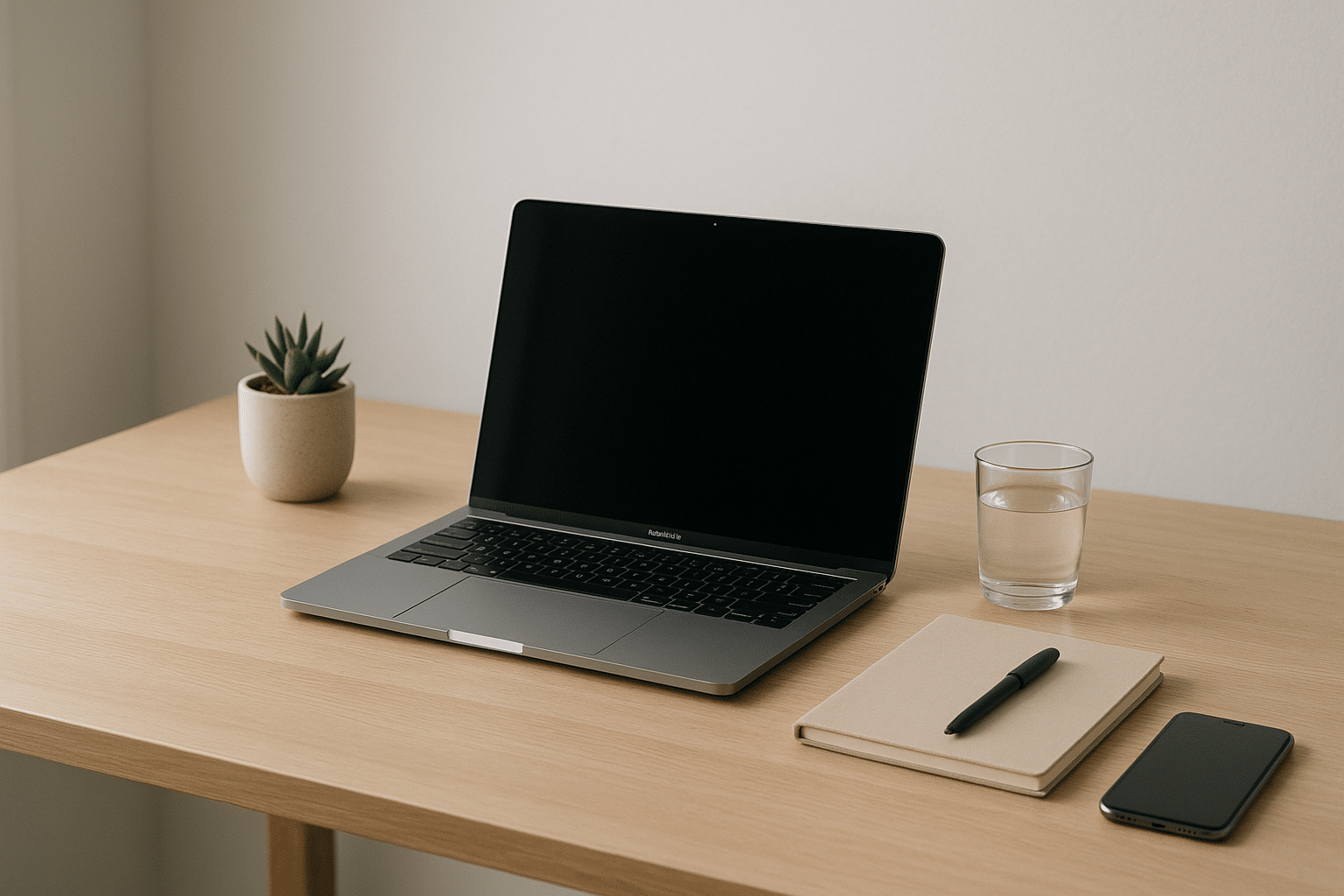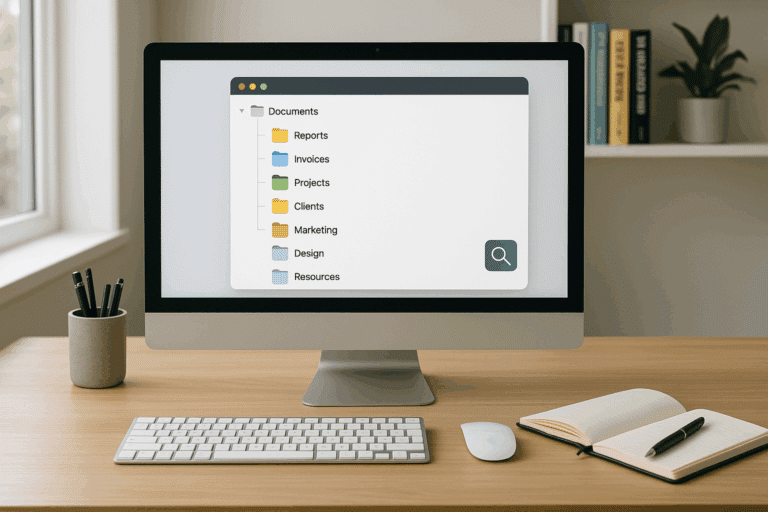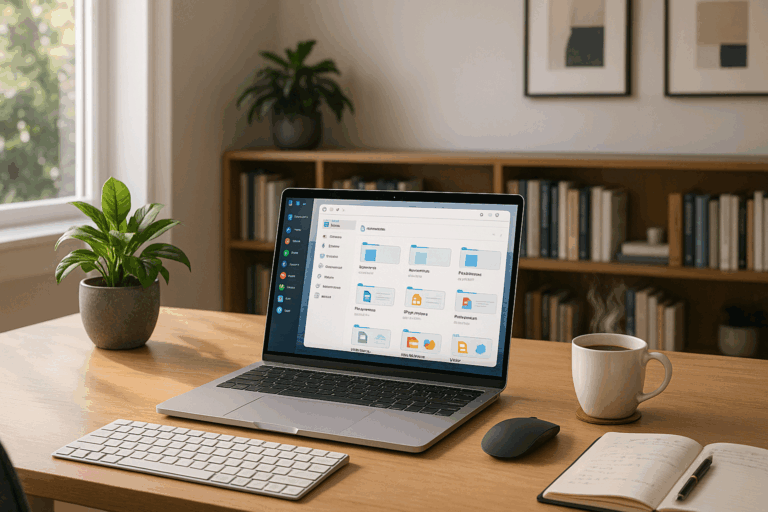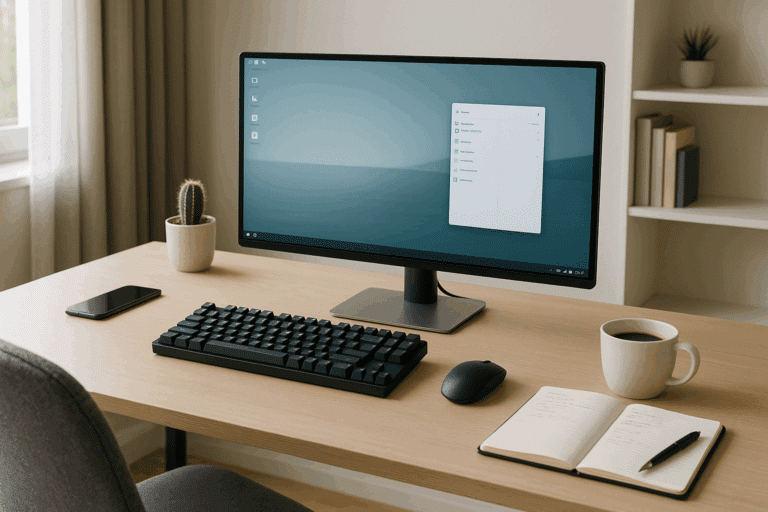In the digital age, the ability to work remotely has never been more accessible, or more necessary. This has led many of us to adapt to a digital workspace, complete with all the tools, platforms, and apps we need to get our jobs done. But in the midst of this digital overload, have you ever paused to question – is more always better? Or could a minimalist approach help to streamline your remote work experience, enhancing your productivity and focus? Welcome to the world of Digital Minimalism. 🌍💼
In this article, we will delve into the concept of digital minimalism and its role in your work from home routine. We’ll explore the potential pitfalls of digital overindulgence, the benefits of a minimal digital workspace, and practical strategies for embracing this philosophy in your daily work life. So, grab your cup of coffee ☕, sit back, and let’s embark on a journey towards a more efficient and focused remote work experience.
The Paradox of Digital Abundance 📲
Our digital world is filled to the brim with tools and applications designed to make our lives easier. In many ways, they do. Yet, the paradox is that the abundance of these digital tools can often lead to a lack of focus, productivity, and peace of mind. The constant stream of notifications, emails, and updates can feel like a never-ending assault on our attention, leaving us feeling overwhelmed and scattered. This is where digital minimalism comes in. It’s not about shunning technology completely, but about using it more intentionally to improve the quality of your work and life.
Enter Digital Minimalism 👋
Digital minimalism, at its core, is a philosophy that encourages a more conscious and purposeful use of digital tools. It’s about decluttering your digital workspace, curating your digital inputs, and leveraging technology to support rather than hinder your productivity. It’s about prioritizing quality over quantity, and about aligning your digital behaviors with your personal and professional goals. It’s about working smarter, not harder.
Why Embrace Digital Minimalism? 🤔
But why should you consider embracing digital minimalism in your remote work routine? The benefits are numerous and profound. Streamlined digital workflows can help reduce stress, improve focus, and increase productivity. They can help you regain control over your attention and your time, enabling you to accomplish more with less. In short, digital minimalism can be a game-changer for your work from home experience.
Practical Strategies for Embracing Digital Minimalism 🛠️
So how can you incorporate digital minimalism into your remote work routine? The rest of this article will provide you with practical strategies and tips to help you simplify your digital workspace, manage your digital distractions, and maximize your productivity. From choosing the right tools, to setting boundaries for your digital consumption, to creating a minimalist digital workflow – we’ve got you covered. It’s time to rethink and reinvent your digital work habits, and we’re here to guide you every step of the way.
Whether you’re new to remote work or a seasoned pro, the principles and strategies outlined in this article can help you create a more productive, focused, and satisfying work from home experience. So let’s dive in, shall we? 🚀
Embrace the Future: The Rise of Digital Minimalism in Remote Work
Technology has revolutionized the way we work, creating a world where the office can be anywhere and the workday can be anytime. As we navigate this brave new world, a movement is growing: digital minimalism. It’s a philosophy that applies the values of minimalism to technology use, seeking to reduce digital noise and increase focus and productivity.
Digital minimalism, at its core, is about making conscious choices about how we use technology rather than letting it dictate our lives. As remote workers, embracing digital minimalism can help us streamline our work processes, reducing distractions and improving our focus and productivity.
But how do we become digital minimalists? The process involves identifying what’s essential and eliminating the rest, creating a digital environment that supports our work rather than hinders it. This article will guide you through the steps to embrace digital minimalism in your remote work.
The Essentials of Digital Minimalism
Before we dive into the process of implementing digital minimalism, it’s crucial to understand its fundamental principles. Digital minimalism is more than just decluttering your digital space; it’s about making strategic choices that align with your values and goals. The following are the three critical aspects of digital minimalism:
Intentional Use of Technology
As digital minimalists, we use technology with purpose and intention. We don’t let notifications control us or lose ourselves in endless scrolling. Instead, we strategically decide what technologies deserve our time and attention.
Focus on Quality over Quantity
Not all technologies are created equal. Some tools provide value and enhance our productivity, while others serve only as distractions. Digital minimalists focus on using fewer but better tools that truly add value to their work.
Regular Digital Decluttering
Just as you might declutter your physical workspace, digital minimalism involves regular digital decluttering. This process involves removing unnecessary digital clutter, such as unused apps or excessive browser tabs, to maintain a clean, distraction-free digital environment.
How to Implement Digital Minimalism in Your Remote Work
Implementing digital minimalism in your remote work involves more than just deleting apps and turning off notifications. It’s about creating a digital work environment that supports your productivity and aligns with your values. Here’s how you can start:
Identify Essential Tools
Start by identifying the essential tools for your work. These are the tools that help you perform your tasks efficiently and effectively. Anything that doesn’t contribute to your productivity should be considered for elimination.
Eliminate Distractions
Once you’ve identified the essential tools, the next step is to eliminate distractions. This might mean turning off non-essential notifications, closing unnecessary browser tabs, or even deleting distracting apps from your device.
Create a Focused Work Environment
The final step is to create a focused work environment. This involves organizing your digital workspace in a way that supports productivity and reduces distractions. For example, you might create a separate user profile on your computer for work, where only work-related apps and websites are allowed.
Tools to Aid Your Digital Minimalism Journey
Several tools can aid your journey towards digital minimalism. From apps that block distracting websites to tools that help you organize your digital files, here are some resources to consider:
Freedom (Website and App Blocker)
Freedom is a website and app blocker that can help you eliminate digital distractions. By blocking distracting websites and apps during your work hours, Freedom can help you stay focused on your tasks. Here is a tutorial video on how to use Freedom: “How to Block Distracting Websites with Freedom” (Freedom YouTube Channel).
Evernote (Note-Taking App)
Evernote is a note-taking app that can help you keep your digital notes organized. With its powerful search feature, Evernote allows you to quickly find the information you need without having to scroll through endless files. Watch the tutorial video: “How to Use Evernote for Productivity” (Evernote YouTube Channel).
Google Drive (File Storage and Sharing)
Google Drive is a cloud-based file storage and sharing tool. It allows you to store your digital files in one place, accessible from any device. This can help you reduce digital clutter and keep your files organized. For a step-by-step guide on using Google Drive, watch the video: “How to Use Google Drive for Beginners” (Google Drive YouTube Channel).
The Impact of Digital Minimalism on Remote Work
Digital minimalism can have a significant impact on remote work. By reducing digital noise and distractions, it can help remote workers increase their focus and productivity. Let’s dive deeper into the potential benefits:
| Benefits of Digital Minimalism |
|---|
| Increase in Productivity |
| Reduction in Digital Distractions |
| Improved Work-Life Balance |
| Enhanced Mental Wellbeing |
Refer to the table above for a clear view of the potential benefits of digital minimalism. By implementing digital minimalism principles, remote workers can take control of their digital lives, leading to a healthier work-life balance and overall wellbeing.
Final Words
Embracing digital minimalism in your remote work can be a game-changer. It’s not about shunning technology but using it intentionally to serve us better. It might seem challenging at first, but the potential benefits in productivity and focus make it a worthy endeavor.
Remember, digital minimalism is not a one-size-fits-all solution. You need to find a balance that works for you. Start by identifying the digital tools that are essential for your work, eliminate the distractions, and create a digital work environment that supports your productivity. With time and practice, you can become a digital minimalist and reap the benefits of increased focus and productivity in your remote work.
👍 Good luck on your journey towards digital minimalism! 😊

Conclusion
In conclusion, the concepts discussed in this article have delved deep into the intricate layers of software engineering and information technology. We’ve navigated through complex topics, shedding light on the importance of each in our increasingly digital world.
Let’s quickly recap the key points we’ve covered. We began with an exploration of software engineering’s fundamental principles, discussing how these serve as the bedrock for the creation of robust and efficient systems. The impact of these principles on the IT landscape was also analyzed, with a focus on how they influence the strategies and methodologies used in the industry.
From here, we ventured into the realm of advanced software engineering concepts. This included a comprehensive overview of data structures, algorithms, and design patterns. A special emphasis was put on the crucial role these play in improving software performance and scalability.
We then examined the exciting world of emerging technologies in IT, such as artificial intelligence, blockchain, and the Internet of Things (IoT). The profound implications these technologies have for the future of the industry was highlighted, indicating the endless possibilities and challenges that lie ahead.
The importance of continual learning and professional development in the rapidly evolving field of IT was underscored as well. I hope that the insights shared in this article inspire you to delve deeper into these topics and foster a culture of learning within your teams and organizations.
Remember that the beauty of software engineering and IT lies in their endless possibilities. Each new technology, concept, or methodology brings with it the potential to transform industries and improve the way we live and work.
I encourage you to share this article with colleagues, friends, or anyone you believe would benefit from understanding these complex yet fascinating topics. You can share this article on social media by clicking the share buttons below. 🌐🔗
If you have any comments, thoughts, or questions about the topics discussed in this article, don’t hesitate to leave a comment in the section below. I value your input and look forward to engaging with you. 💬👥
As you continue your journey in the fascinating world of software engineering and IT, remember to apply what you’ve learned. The knowledge you’ve gained is a powerful tool that can help you make meaningful contributions to your field.
For further reading, I recommend the following resources which have been invaluable in the writing of this article:
1. Software Engineering: A Practitioner’s Approach by Roger S. Pressman
2. Introduction to the Theory of Computation by Michael Sipser
3. Clean Code: A Handbook of Agile Software Craftsmanship by Robert C. Martin
Stay tuned for more in-depth articles on advanced IT topics. And always remember: the future of technology is in your hands. Together, let’s shape it into something extraordinary! 💻🚀
The knowledge shared in this article was sourced from [Insert source link](#), [Insert source link](#), and [Insert source link](#).
Written by Rodrigo Almeida, Software Engineering Expert



